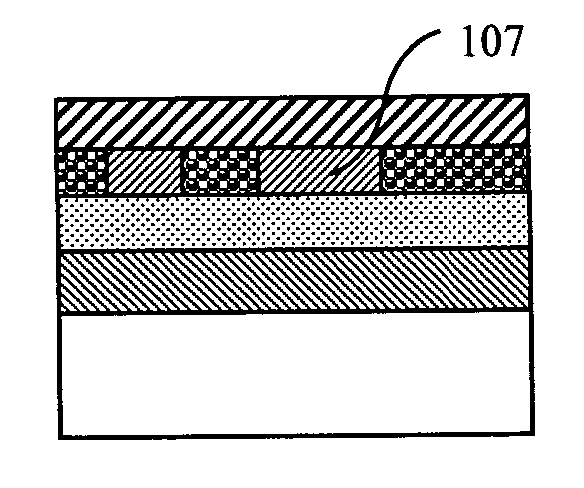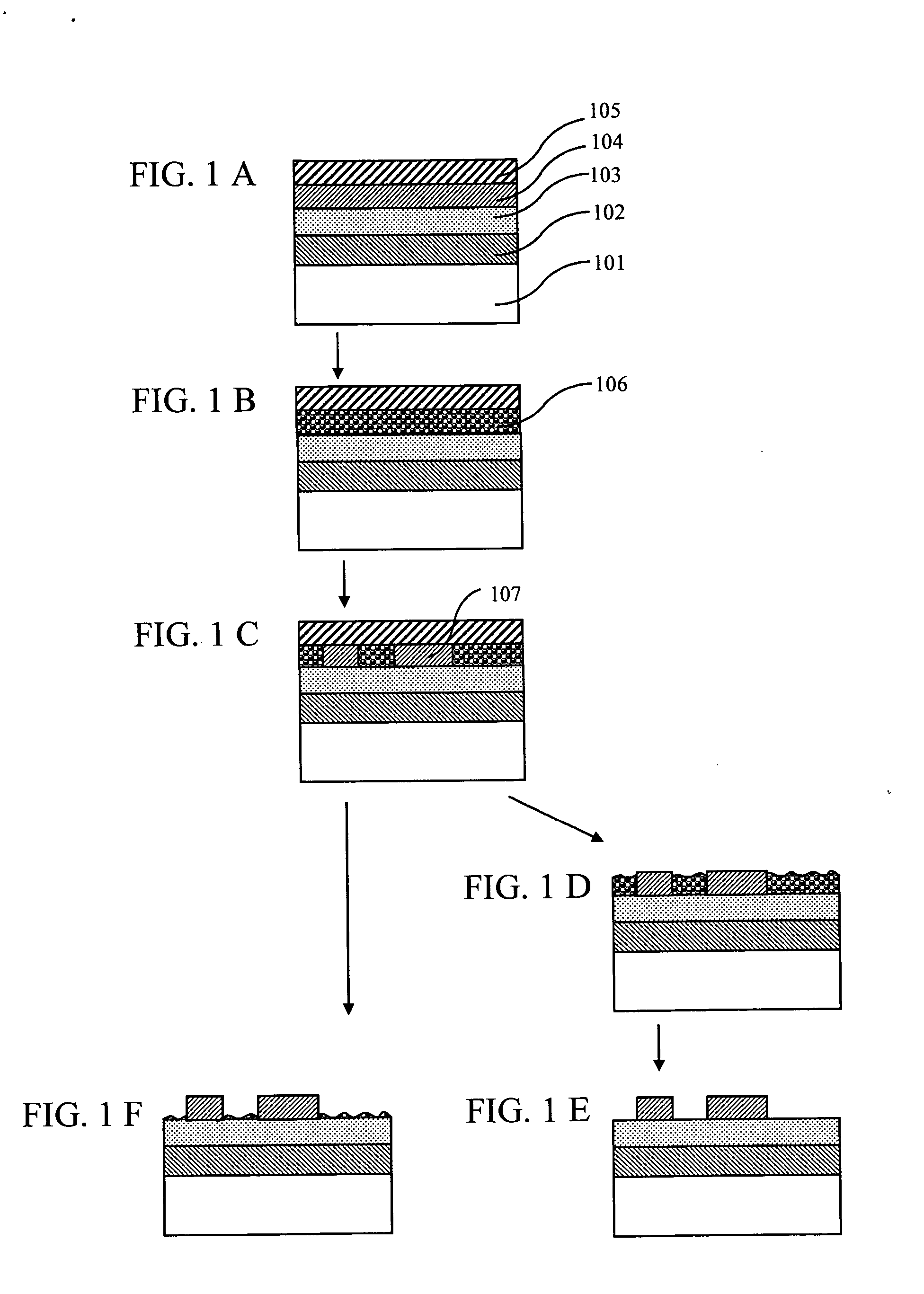Method for fabrication of physical patterns and the method for fabrication of device using the same
a technology of physical pattern and fabrication method, which is applied in the direction of optical recording/reproducing/erasing method, photomechanical apparatus, instruments, etc., can solve the problems of poor reproducibility of process, high processing cost, and high processing cost, so as to reduce increase and achieve the effect of improving the solubility of the region
- Summary
- Abstract
- Description
- Claims
- Application Information
AI Technical Summary
Benefits of technology
Problems solved by technology
Method used
Image
Examples
first embodiment
[0032] A ROM substrate for an optical disk was produced by using a phase change film which is used in most optical disks by the method as described above.
[0033] A medium having the structure of FIG. 1A was produced, and, an attempt was made to record amorphous marks by irradiating the medium with a laser beam. The medium comprises a glass substrate 101, and an Ag film 102, a lower protective film 103, a phase change film 104, and a protective film 105 disposed on the substrate 101 in this order. All of the film layers formed on the glass substrate 101 were formed by sputtering. The protective film 105 was formed from SiO2, and the lower protective film 103 was formed from (ZnS)80(SiO2)20, and the phase change film 104 was formed form Ge5Sb70Te25. The Ag film 102 was formed to diffuse the heat generated within the phase change film by the laser irradiation.
[0034] This medium was heated in a bake furnace to a temperature of 300° C. for 3 minutes to crystallize the phase change film ...
second embodiment
[0038] Another method for producing a physical pattern is shown in FIG. 4. In this method, a plastic substrate was used and the recording was accomplished by using a commercially available recording system. A polycarbonate substrate was used for the plastic substrate. As shown in FIG. 4A, a disk comprising a lower protective film 402, a phase change film 403, a upper protective film 404, a reflective film 405, and a polycarbonate upper substrate 406 disposed on a lower substrate 401 was produced. The films were all formed by sputtering, and the reflective film 405, the upper protective film 404, the phase change film 403, and the lower protective film 402 were deposited on the upper substrate 406 in this order. The reflective film 405 was an Ag film having a thickness of 20 nm, and the upper protective film 404 was a film of ZnS—SiO2 having a thickness of 30 nm. The phase change film 403 was a film of Ge5Sb70Te25 having a thickness of 20 nm, and the lower protective film 402 was a f...
third embodiment
[0043] In this embodiment, the advance treatment was accomplished by reactive ion etching. The surface of the region having a thermal energy applied thereto and the surface having no such thermal energy applied, or the regions having the thermal energy applied under different conditions experienced different reactions when such surfaces were further treated by slow reactive ion etching at a low power.
[0044] A disk was produced by repeating the procedure of the second embodiment, and after exposing the phase change film on the surface, the surface was treated-by reactive ion etching (RIE). The RIE was conducted for 20 seconds at a power of 100 W by using CHF3 for the gas.
[0045] In order to evaluate the difference in the fluoride formation on the surface, a sample having a line-shaped amorphous region formed in the crystalline region was prepared and this sample was immersed in water. When it was removed from the water, the water was immediately shed by the crystalline region while ...
PUM
 Login to View More
Login to View More Abstract
Description
Claims
Application Information
 Login to View More
Login to View More - R&D
- Intellectual Property
- Life Sciences
- Materials
- Tech Scout
- Unparalleled Data Quality
- Higher Quality Content
- 60% Fewer Hallucinations
Browse by: Latest US Patents, China's latest patents, Technical Efficacy Thesaurus, Application Domain, Technology Topic, Popular Technical Reports.
© 2025 PatSnap. All rights reserved.Legal|Privacy policy|Modern Slavery Act Transparency Statement|Sitemap|About US| Contact US: help@patsnap.com



